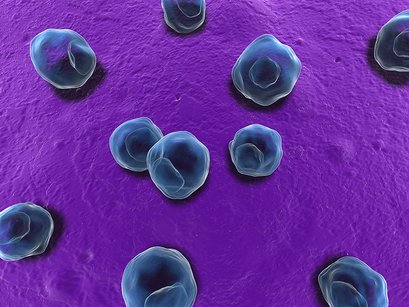Chlamydophila pneumoniae

Chlamydophila pneumoniae is a causal agent of community-acquired pneumonia and is categorized as an atypical cause of pneumonia, together with Legionella pneumophila andMycoplasma pneumoniae. Chlamydophila pneumoniae mainly infects adults. The higher incidence takes place in elderly people and it is considered responsible of 10% of all the cases of pneumonia and, according to some authors, the most frequent cause of those cases of known ethiology. It is usually mild and causes low mortality rates.
Clinical features: The seroprevalence to C. pneumoniae is low in infants but it can be higher than 50% in adults. Respiratory infection with C. pneumoniae occurs worldwide and in all age groups. Seroepidemioloical studies show that 50 to 75% of adults have antibodies against C. pneumoniae. Most people are infected and reinfected throughout their life. C. pneumoniae has been associated with the establishment of ateromatous disease and heart attacks.
Diagnosis: Laboratory methods for the diagnosis of C. pneumoniae infection include isolation of the organism in cell culture, serological assays, and DNA amplification tests. Due to its technical complexity and variable yield, culture of C. pneumoniae is limited to few laboratories. Despite efforts to improve the sensitivity of cell culture, few isolates of C. pneumoniae have been obtained worldwide. Antibody assays are the most common tests still used for the diagnosis of C. pneumoniae infections. Serological testing requires paired serum samples for an accurate diagnosis, offering a retrospective diagnosis. IgM antibodies appear 2-3 weeks after infection, while IgG requires 6-8 weeks to be detected. IFA and ELISA techniques are used for the diagnosis of infections with Chlamydophila pneumoniae. PCR provides a more rapid alternative for identification of C. pneumoniae infection, replacing other direct methods of diagnosis because of its higher sensitivity based on amplification. It enables the detection of the pathogen in respiratory secretions during the early stages of disease, when there is no antibody response.
Treatment: the treatment for atypical pneumonia is based on antibiotic therapies. In acute cases, the therapy includes oral antibiotics. However, severe cases may be treated with intravenous antibiotics and oxygen supplement.

